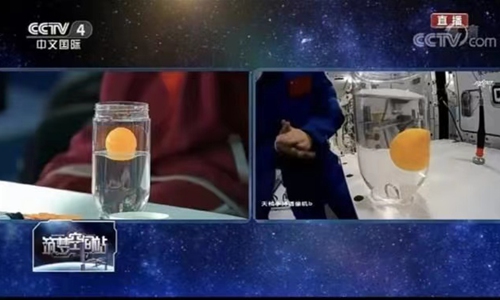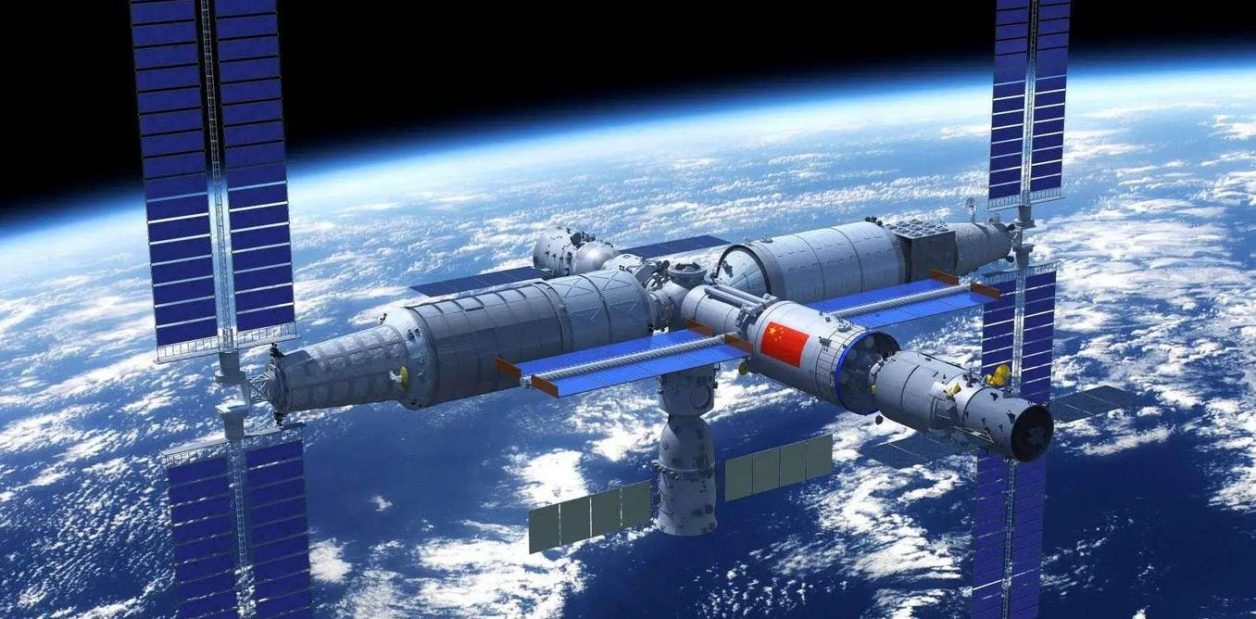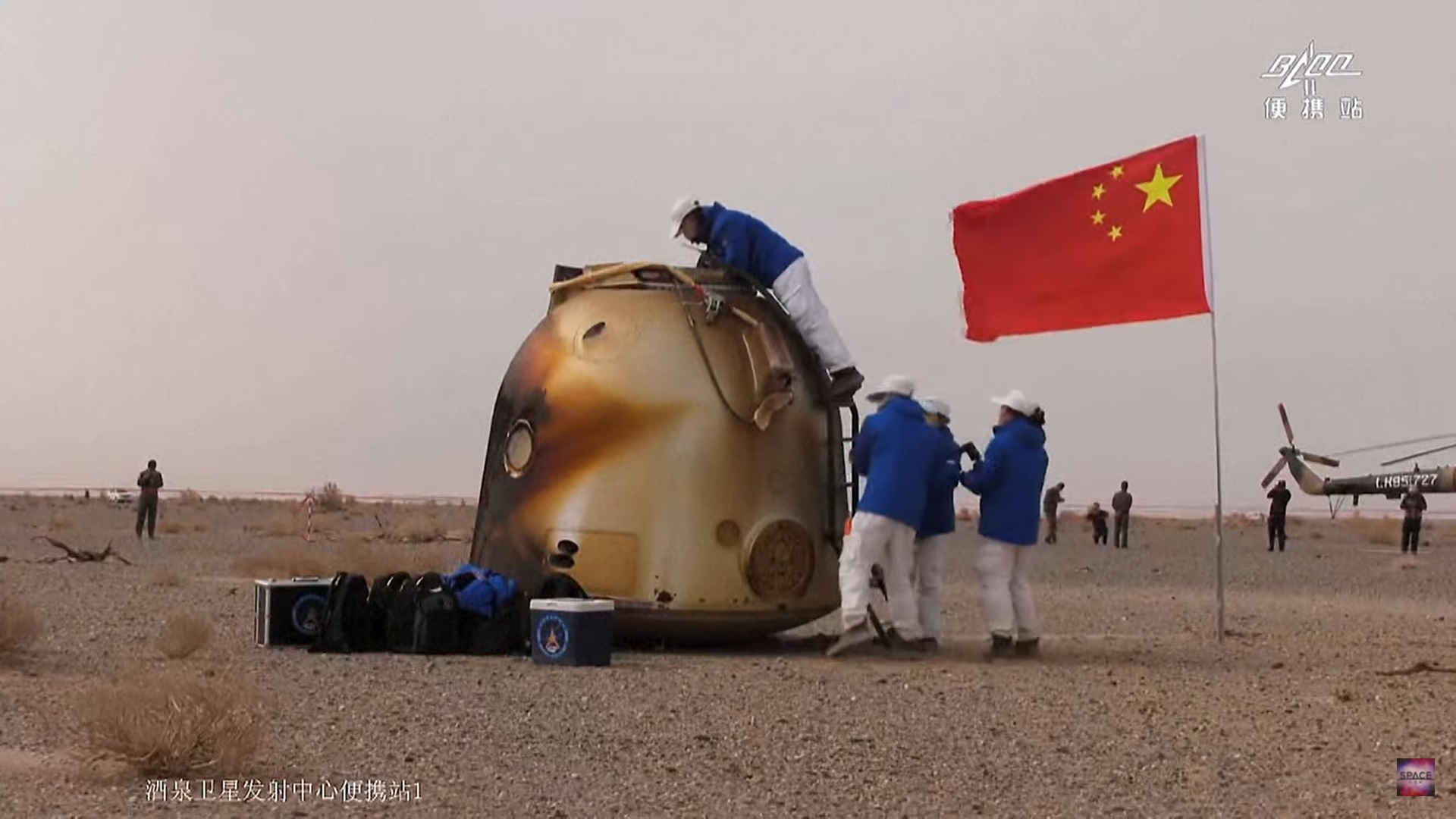On March 23, Chinese astronauts organized a science class involving an experiment with a glass of water from their space station. This allegedly sparked a hotly contested discussion on international social media forums.
US Offers ‘Critical Tech’ To Develop India’s 5th-Gen Fighter Jet Three Years After It Punctured AMCA Program
Foreign internet users questioned why a glass of water didn’t float in space due to the absence of gravity and even suggested a conspiracy that China may have faked its space station.
Now, State-run Global Times reported, citing an explanation provided by Chinese aerospace institutions on June 30, that the water in a cup did not float in space because of the water surface tension at work in the weightless environment. Also, the cup was fixed to the table for convenience.
The report noted that the country’s Space Agency and other Chinese space-related forums all published explanations on the Quora-like website Zhihu on June 30 to shed light on why the water in the glass didn’t float in space.
It includes China Aerospace Science and Technology Corp, China’s aerospace social media Our Space, and the science and technology communication center of the China Association for Science and Technology.
According to Our Space via Zhihu, science is not all that mysterious and is easy to understand with a few simple words and images.
The water and the cup are the backup teaching materials for the second science class being taught from China’s space station, as per Our Space. “Our taikonauts (Chinese astronauts) carefully poured the drinking water into the cup,” it said.
On March 23, the Shenzhou-13 crew members Zhai Zhigang, Wang Yaping, and Ye Guangfu addressed the second science lesson from China’s space station to students on Earth in the afternoon.
Our Space noted that the water was not used for drinking because taikonauts had to use drinking water bags with a one-way valve structure. It further explained that drinking from cups directly in space could be hazardous.
A picture demonstrating how a table tennis ball could stay submerged in space was also displayed. From the image, it is clear that when the astronauts carefully filled the container with water, neither the ping-pong ball nor the water floated due to surface tension but maintained a state of equilibrium inside.

The YouTube channel CNSpace_dev also posted a video of Wang Yaping and Ye Guangfu setting up the water experiment in space so that netizens could see what goes on behind the scenes when a lecture is being prepared for Tiangong, China’s Space Station that is currently under construction.
“Education from space is always feasible & should be part of the mission where one of the taikonauts could give a space talk combined with some simple school experiments for the students on Earth. It’s about communication between Earth & space,” K Wong, a user, commented, according to the Global Times.
“The cup has Velcro strips between its bottom and the table. The water stayed in the cup (despite weightlessness) due to surface tension,” another user named “Wei Cheng” wrote.

Shenzhou-13 Mission
The Shenzhou-13 spacecraft, launched on October 16, 2021, carried Zhai Zhigang, Wang Yaping, and Ye Guangfu to China’s Tianhe core module, where they resided for six months. They also set a new record for the time Chinese astronauts have spent in space. On April 16, 2022, the three people safely returned to Earth.
Following their return to Earth in April, the three astronauts of China’s Shenzhou-13 crewed mission met with the media and the general public last month. They have finished several cutting-edge scientific investigations and space applications.

The first Chinese astronaut to complete a spacewalk and the one who has engaged in the most extravehicular activities overall is Zhai Zhigang. Wang Yaping is the first Chinese woman to perform an extravehicular spacewalk and the nation’s first “space teacher,” educating children about space-related issues.
Future Missions
Meanwhile, China’s Shenzhou 14 mission arrived at Tianhe, the core module of the under-construction Tiangong space station, on June 5.
The Shenzhou 14 crew members, commander Chen Dong, Liu Yang, and Cai Xuzhe, are presumed to spend roughly six months on board the Tianhe (“Harmony of the Heavens”) spacecraft. The spacecraft was launched into low Earth orbit in April 2021.
The group will carry out numerous scientific exploration and outreach initiatives while in orbit, complete spacewalks, and set up new hardware inside and outside Tianhe, Chinese space officials have said.
The Shenzhou 15 launch is anticipated for the year’s end. However, it isn’t easy to be sure because China typically withholds many details about its space missions until they are about to take place. If everything goes as planned, the Tiangong space station will experience its first-ever crew handover when Shenzhou 15 and Shenzhou 14 overlap.
- Contact the author at ashishmichel@gmail.com
- Follow EurAsian Times on Google News




